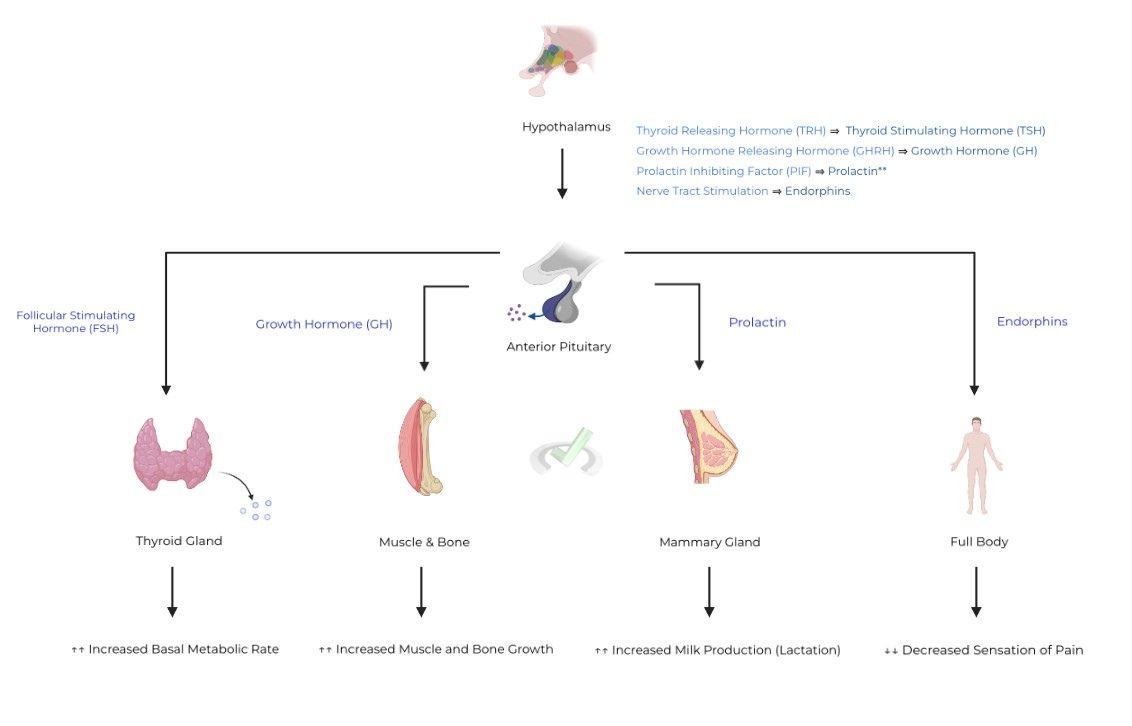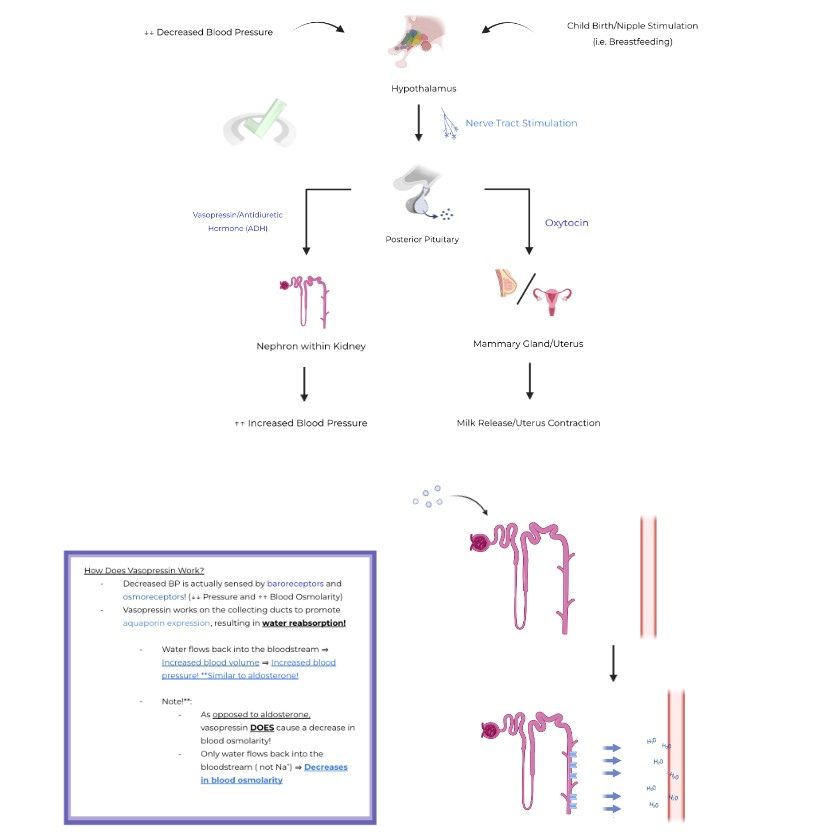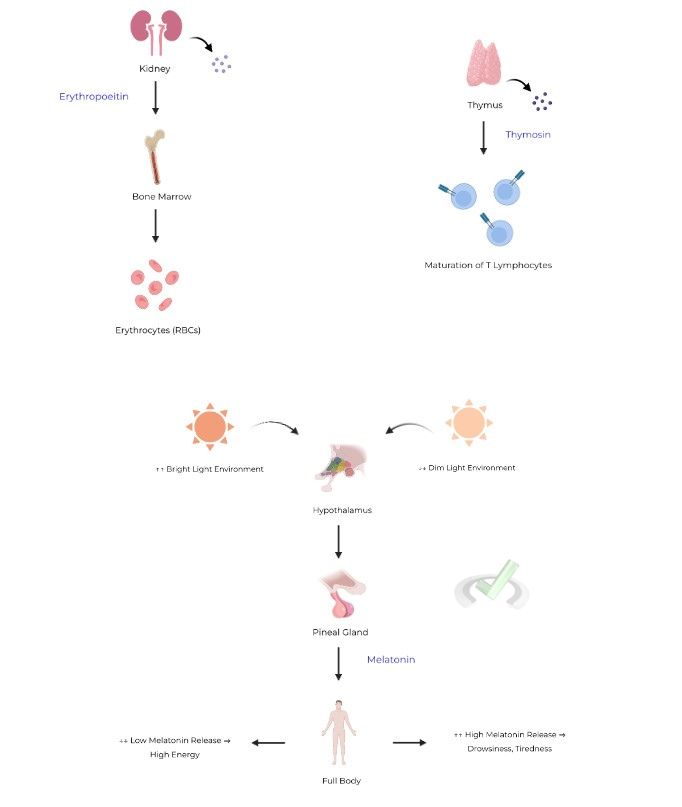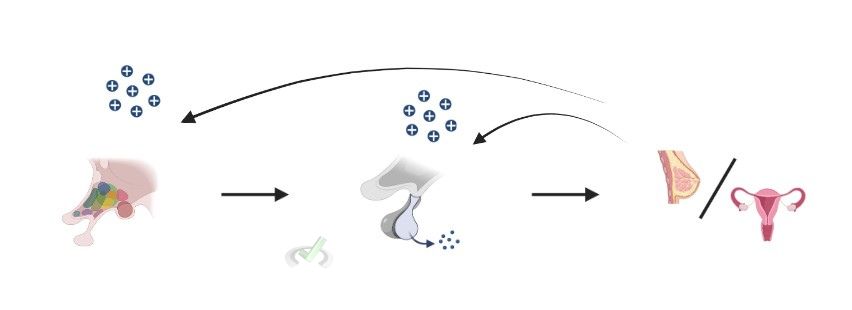I. What are Miscellaneous Endocrine Hormones?
Congratulations! You’ve made it to the last installment of our endocrine study notes section! (Hooray!) Though this was indeed one of the more content dense and overall high yield MCAT topics, you guys are one step closer to conquering the MCAT and your dreams of earning that white coat!
This section is specifically reserved for hormones which didn’t fit or fall well into the other sections and those which could really be studied by themselves. Despite this, you’ll see major throwbacks to other endocrine topics that we’ve discussed previously, such as the hypothalamic-pituitary interactions!
As you go on and review this article, we’ll put a star next to the endocrine interactions which have a bit more high yield when compared to the others. Of course, study and review all the interactions, but give a bit more emphasis on those interactions containing stars as we indicated!
II. Content Review
For the remaining miscellaneous hormones, we’ve found it easier to categorize them via the following subdivisions: 1) Anterior Pituitary, 2) Posterior Pituitary, and 3) Others.
A. Anterior Pituitary
We’ve already mentioned the anterior pituitary gland & some of the other associated hormones including FSH, LH, and ACTH. The remaining anterior pituitary hormones include:
- Thyroid Stimulating Hormone (TSH) → Promotes release of thyroid hormone for thyroid gland
- Growth Hormone (GH) → Induces muscle and bone growth
- Prolactin → Causes milk production (A.K.A. lactation)
- Endorphins → Decreases perception of pain

The blue font text next to the arrow just before the anterior pituitary gland lists the hypothalamic-anterior pituitary interactions that occur. The first 3 are tropic hormones that will utilize the hypophyseal-portal system while the last one is simply a nerve tract stimulation causing hormone release.
B. Posterior Pituitary
This will actually be our first encounter with the posterior pituitary gland hormones! These hormones include:
- Vasopressin/Antidiuretic Hormone (ADH) → Increases blood pressure
- Oxytocin → Promotes uterine contraction and milk release from mammary gland

C. Others
For these last group of hormones, they don’t really have a neat classification and kinda also fall into their own miscellaneous categories! These primarily include:
- Melatonin → Regulates body’s biological clock/circadian rhythm
- Thymosin → Promotes T cell development and maturation
- Erythropoietin → Stimulates RBCs (red blood cell/erythrocyte) production

III. Bridge/Overlap
You probably noticed the asterisks sign on the prolactin hormone when it interacts with prolactin inhibiting factor (PIF). This hormone wasn’t included in the hypothalamic-pituitary interaction study article as this is more low yield, but we wanted to at least make a note on it here!
Prolactin inhibiting factor is actually dopamine and, as the name implies, inhibits the release of prolactin from the anterior pituitary. It’s only when PIF release STOPS that prolactin is released!
This is unlike the other hypothalamic tropic hormones, where there is a promoting effect for anterior pituitary hormone release (i.e. GnRH ⇒ FSH and LH release).
In addition, another note we’d like to make and connect back to previous articles is that all hormone interactions are under negative feedback, with the EXCEPTION of oxytocin.
Oxytocin is actually under positive feedback during childbirth and breastfeeding. This should make sense because the release of oxytocin should be further stimulated in order to further promote uterus contraction for childbirth and milk release.
IV. Wrap Up/Key Terms
Let’s take this time to wrap up & concisely summarize what we covered above in the article!
As stated before, these categories of hormones don’t really fall into a clean category like the other hormones study articles; hence, why they’re classified as miscellaneous!
A. Anterior Pituitary
- Thyroid Stimulating Hormone (TSH) → Promotes release of thyroid hormone for thyroid gland
- Thyroid Hormone → Increases basal metabolic rate in the rest of the body
- Growth Hormone (GH) → Induces muscle and bone growth
- Prolactin → Causes milk production (A.K.A. lactation)
- Endorphins → Decreases perception of pain
These hormones will be released in response to tropic hormones or nerve tract stimulation, originating in the hypothalamus.
B. Posterior Pituitary
Vasopressin/Antidiuretic Hormone (ADH) → Increases blood pressure
Oxytocin → Promotes uterine contraction and milk release from mammary gland
Similarly, these hormones are also release via nerve tract stimulation originating from the hypothalamus
C. Others
- Melatonin → Regulates body’s biological clock/circadian rhythm
- Thymosin → Promotes T cell development and maturation
- Erythropoietin → Stimulates RBCs (red blood cell/erythrocyte) production
**Note!: Although not mentioned in the article, we also wanted to briefly mention digestive hormones and their endocrine function. We’ll cover them in more detail in another article!
V. Practice
Take a look at these practice questions to see and solidify your understanding!
Sample Practice Question 1:
Alcohol is known to inhibit the production and release of a certain hormone, which causes an individual to be severely dehydrated. Which of the following hormones is most likely inhibited by alcohol consumption?
A. Melatonin
B. Thyroid Stimulating Hormone (TSH)
C. Vasopressin/Antidiuretic Hormone (ADH)
D. Thymosin
Ans. C
Dehydration is most likely caused by decreased water/fluid within the body’s system. We know that vasopressin/ADH is responsible for water reabsorption into the bloodstream ⇒ Causes body hydration!
If ADH is inhibited, this water reabsorption into the bloodstream is disrupted which causes dehydration!
Sample Practice Question 2:
Which of the following best models the blood osmolality before and after vasopressin release?
A. Before: 400 Osm/kg; After: 700 Osm/kg
B. Before: 300 Osm/kg; After: 300 Osm/kg
C. Before: 350 Osm/kg; After: 600 Osm/kg
D. Before: 500 Osm/kg; After: 250 Osm/lg
Ans. D
Because vasopressin/ADH promotes ONLY water reabsorption into the bloodstream, this results in a DECREASE in blood osmolarity. Think of it like the bloodstream becoming more dilute, which is why the blood osmolarity decreases! (i.e. becomes less concentrated).



 To help you achieve your goal MCAT score, we take turns hosting these
To help you achieve your goal MCAT score, we take turns hosting these 
























